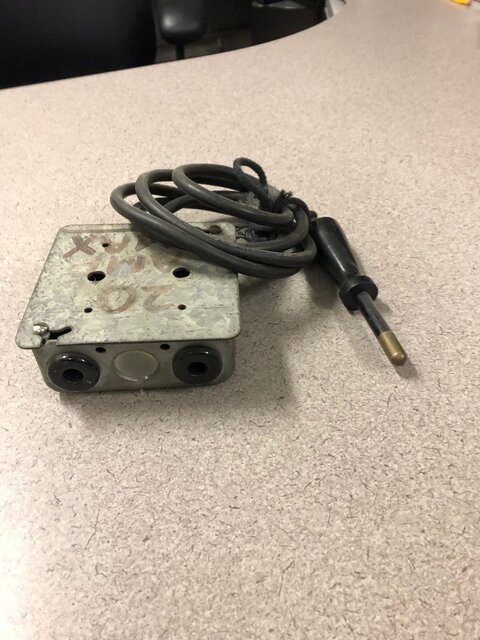After watching almost a week's worth of patch systems descriptions I decided it's time to
throw this one into the mix.
In the early '60s I worked as chief elec. in a small
theatre in Cleveland. The plant was built in the late '40s and apparently was designed (or at least assisted by) a very good
theatre designer. About three hundred capacity, 30
foot prosc., 40' to back wall, 20' off both SL & SR, (sorry, no orch. pit :-( ), TWO very nice ceiling coves the full width of the
house, nice hidden prosc. splay positions,
grid over twice prosc. height. The board was in a projection booth with good
stage visual; 48, 6 kW autotransformers plus some for the
house. The board and cross-connect were built by Cleveland Switchboard Co., a local manufacturer who we used many times to
build oddball stuff for various projects.
Now, to the
patch panel. On the back wall of the booth was a cabinet about 8' high x 6' wide and a
foot deep. In the cabinet was a slate back board with 48, 6' vertical copper buss bars, each about 1" x 1/8", one for each
dimmer circuit, with a 60A cartridge
fuse at the top of the cabinet for each bar. The bars were mounted perpendicular to the back board with the 1/8"
edge facing
edge out. Mounted above (away from the back board) in front of these vertical bars were horizontal bus bars for each
circuit (I don't remember how many; this has been a few weeks ago but they filled the 7' cabinet), also 1" x 1/8" with the1/8"
edge facing out. Each horizontal bar had a 30A cartridge
fuse for its
circuit at the side of the cabinet. On each horizontal bar was a
plug (for want of a better word) which could be moved side-to-side when pulled "out" away from the back board without touching the vertical bars below. The
plug for any
circuit could be pushed "in" to make contact with the vertical bus bar for any
dimmer.
This cross-connect allowed any
circuit to be connected to any
dimmer. Of course,this operating cross-connect this required a
bit of intelligence (read: a
NON-IDIOT) on the part of the electrician. One
COULD plug everything in the
theatre to
ONE dimmer, but this would be kinda stupid and would instantly blow the
dimmer's
fuse. One
COULD plug, kill and re-plug hings "hot", but this also would be kinda stupid and hard on the buss bars. One
COULD lean up against the cross-connect and get a big surprise, but this also would be kinda stupid. One
COULD reach into the cross connect and grab things while hot, -- but then, well, you know.
I never had any trouble plugging shows per the designer's wishes, sometimes re-plugging things pretty quickly between dim-outs & dim-ins) (Thanks, Paul Marantz!) and never heard of anyone getting zapped on this equipment. Oh, and this was long before
OSHA and everything else that interferes with our lives.



